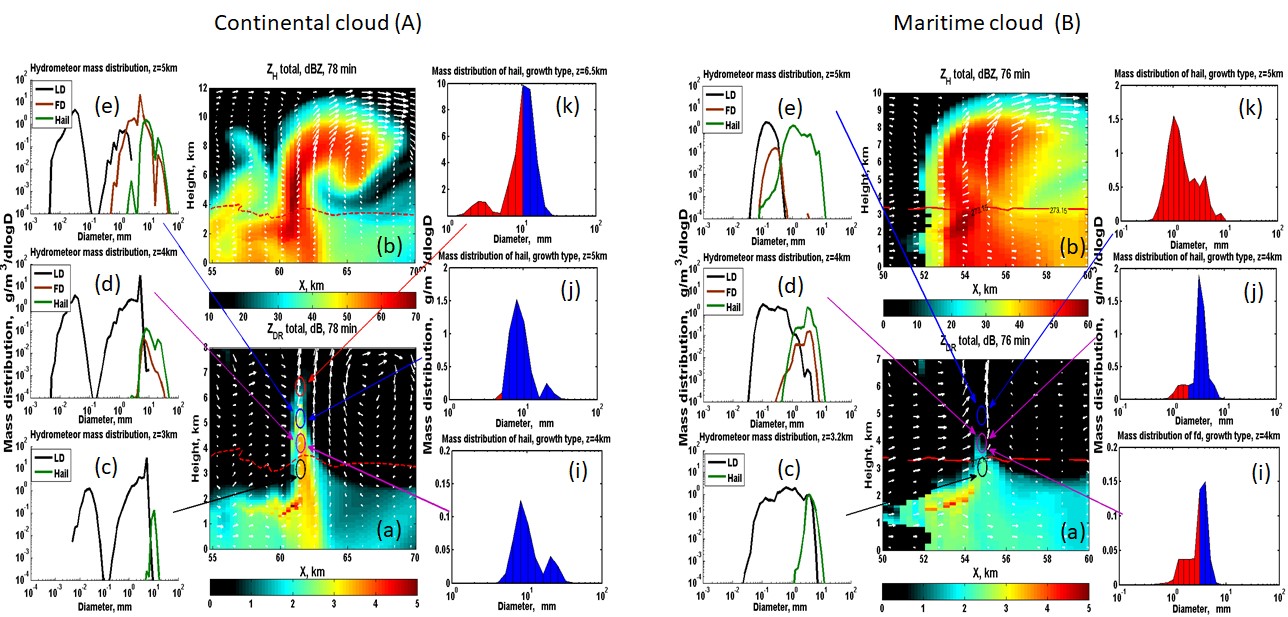Relationship between aerosols, hail microphysics, and ZDR columns
Submitter:
Khain, Alexander — The Hebrew University of Jerusalem
Ryzhkov, Alexander — NOAA - National Severe Storms Laboratory
Area of research:
Cloud-Aerosol-Precipitation Interactions
Journal Reference:
Science
The relationship between aerosols, hail, and properties of the ZDR columns was analyzed in simulations of a hail storm typical for Oklahoma. The simulations were performed using the Hebrew University Cloud Model (HUCM) with new bin microphysics. The HUCM calculates liquid water fractions in freezing drops covered by ice shell, as well as hail and graupel. A polarimetric radar forward operator is used to calculate radar reflectivity and differential reflectivity ZDR. using the microphysical fields. It is shown that ZDR columns are caused by raindrops and hail particles growing in a wet growth regime within convective updrafts.
Impact
High correlation of volumes and heights of ZDR columns with vertical velocity, hail size, and aerosol concentration is found. The parameters of ZDR columns can serve as a good predictor of maximum hail size, and vertical velocity in deep convective clouds and storms.
Summary
Dual polarimetric radar signatures reflect cloud dynamical and microphysical structure. Establishing the close relationship between concentration of aerosols, formation and growth of hail, and ZDR is of high importance for improvement of remote-sensing algorithms, as well as for better understanding microphysical processes in deep mixed-phase clouds.


